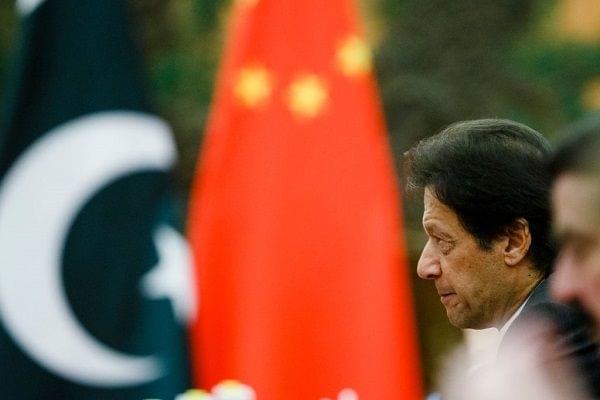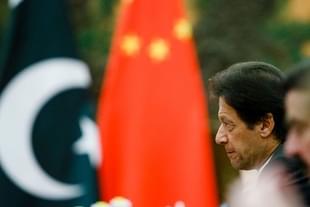Defence
Surgical Strikes 2.0: Pakistan’s Days of Making Nuclear Threats Over
Tushar Gupta
Mar 05, 2019, 01:49 PM | Updated 01:49 PM IST
Save & read from anywhere!
Bookmark stories for easy access on any device or the Swarajya app.


In his televised and digitally transmitted statement to the people of Pakistan last week, Prime Minister Imran Khan tried to offer a history lesson to the leadership in India. Citing how miscalculation in wars has had a cascading impact on civilisation in the past, Khan disguised his threat of a nuclear war in an emotional outburst, garnering cheering from sentimentalist peaceniks on our side.
The statement was not only a shallow offer for de-escalation but also a reminder that both sides harboured nuclear weapons and any further action could warrant their use, thus pushing the subcontinent towards annihilation.
When it comes to nuclear threats and tactics, the difference between India and Pakistan can be attributed to the psychology behind the development of these weapons.
For Pakistan, nuclear weapons are a way to deter conventional warfare with India, given the conventional superiority of the latter. For India, the use of nuclear weapons is to only counter a nuclear attack from Pakistan. Therefore, Pakistan has been more aggressive with its nuclear threats, given how it has anticipated a retaliation to its misadventures on Indian soil. The same aggression was otherwise clouded in words in Khan’s speech earlier this week.
Pakistan, confident that India would not like to provoke a nuclear war, continues its terror operations, thereby eliminating the chances of conventional warfare between the two nations. However, this changed after the attack in Pulwama.
India, given its ‘No-First-Use (NFU) policy, relies on Credible Minimum Deterrence (CMD) to deal with Pakistan. Therefore, even though it does have an NFU policy, it has amassed enough nuclear warheads to cause unacceptable damage to Pakistan in a response strike.
CMD also frees India from focussing on an aggressive build-up of nuclear warheads as seen during the Cold War era. The geography of Pakistan, unlike that of the United States of America (USA) or the Union of Soviet Socialist Republics (USSR), does not warrant the need of developing hundreds of nuclear warheads, but merely enough to respond to an attack.
However, this is where things get complicated for Pakistan.
Firstly, to execute its threat, Pakistan would have to be the first to use its nuclear weapons. Given India’s retaliatory weapons, it will not be easy for Pakistan to gauge the end scenario or how the entire war will play out. One may argue that the NFU puts India on the back foot in situations like these, but it is far more complicated for Pakistan.
This is because the first attack shall require a large scale deployment of nuclear arsenals. This would involve accurate missiles with multiple launch vehicles in the air and on land. The same would require elaborate coordination to ensure simultaneous attacks, response to retaliatory attacks, along with collaboration with ground forces across the Line of Control.
For a governance structure that is plagued with rogue and reckless military generals and their links with terrorist groups, any miscalculation at the time of attack could amount to doom for Pakistan. Even if it wanted to, launching a nuclear strike for Pakistan would be difficult. Achieving the element of surprise would be impossible.
Assuming Pakistan somehow does manage to cause sufficient damage after the first strike, India, in retaliation, would be free to offer a disproportionate response, without the leadership having to worry about the psychological pressure of pushing the subcontinent towards a nuclear war. Given the geographical advantage India holds, a second strike would possibly mean the end of the state of Pakistan.
Far fetched, however, these are scenarios one could imagine before 2016. Today, with a change in leadership in the US, India’s diplomatic clout globally, and Pakistan’s public association with terrorist groups ensure that they will not be able to go beyond mobilisation of nuclear warheads. Here’s why.
One, China, Pakistan’s economic guardian, has substantial investments in the state via the China-Pakistan Economic Corridor (CPEC). Amounting to $62 bilion in 2017, and expected to rise further, China will not look to risk the CPEC for a war rooted in terrorist groups driven by religious ideologies.
China is heavily invested in the Indian market. Any prospect of a nuclear war or an actual war is bound to cause a slowdown in the demand of products from China, further hurting their domestic growth. Therefore, as the emerging global power, China will ensure no mobilisation of nuclear weapons, not for their love for Pakistan, but for the sake of their own economy.
Two, mobilisation of nuclear warheads will not play out well for Pakistan on a global scale. Given they are negotiating investments from the Middle East, are reaching out to the International Monetary Fund (IMF) for a bailout, and trying to work a way out of the Chinese debt trap, the last thing they would want is explaining to the world their recklessness with nuclear weapons. Not only will it deplete them economically, but it will also destroy chances of investments for the future, from countries and global corporations. Pakistan’s economy lies in shambles and that alone prevents them from engaging in any military misadventure.
Three, the United States would like to ensure restraint at Pakistan’s end for four significant reasons which are independent of India.
One, the use or even the mobilisation of a nuclear warhead would change their equation with North Korea, for it would be a reason for Chairman Kim Jong-un to continue with the nuclear development programme. This would further distance the two states. North Korea was instrumental in Pakistan fulfilling its nuclear ambitions, and a war prospect in the subcontinent could further add to the tensions in the Korean peninsula. Sceptical, even South Korea and Japan could find reasons to develop their nuclear programme.
Two, mobilisation of nuclear weapons by Pakistan would lead to an immediate reaction from Iran’s end. Given how relationships between the two states have turned sour, lately, the nuclear threat from Pakistan would be an excuse for Iran to further its nuclear programme, a move that will not go down well with the US.
With Iran and Saudi Arabia, the latter being a US ally, fighting a proxy war in Yemen, Iran’s possession of nuclear weapons could push Saudi Arabia towards its own nuclear programme. This would put the entire Middle East into chaos, impacting oil markets and trade across the globe.
Three, assuming the two states go to war, Pakistan’s existing stockpile of nuclear weapons would be a worry for the US and China in the case of war, for it could be captured by rogue terrorist groups in the region or even Iran, similar to what was witnessed at the dissolution of the USSR.
Four, the US has lived through five decades of Cold War, sitting on thousands of nuclear warheads, ready to be deployed. Even though it encompasses close to 1.5 billion people, the prolonged war between India and Pakistan is nothing in scale compared to what was being anticipated during the Cold War. Thus, the US experience combined with their military and diplomatic clout shall ensure that better sense prevails, even if it is in the face of a Balakot like situation.
For China and the US, a failed Pakistan state opens up Pandora’s box of global warfare. If Pakistan does go for the first nuclear strike, it will break the deterrence threshold that has governed the world for over seven decades, and shall set a dangerous precedent for the future, especially when it comes to relations between Russia and the US, North Korea and the US, and China and India. The whole world might find itself engaged in an arms race towards annihilation. In the scheme of things, this would be like Apple filing for bankruptcy to pay for an employer’s parking fine.
If the 2016 surgical strikes in Pakistan-occupied Kashmir were a testament to India’s new way of countering cross-border terrorism, what occurred in Balakot is India’s clear message to the globe that it will not allow itself to be subjected to continued provocations on its military and civil targets by Pakistan, irrespective of the nuclear threat.
Going further, India must work closely with nations across the globe, especially the US, Russia, and China, to combat terrorism in Pakistan. Simultaneously, the war against terror must continue if Pakistan fails to clean up its backyard or repeats a Pulwama, Pathankot, Uri, or Mumbai. Surgical strikes should not be a term for revenge, but as rightfully described by the government, a non-military preemptive strike against Indian interests.
For long, Pakistan has threatened India with the nuclear card to further its cause in Kashmir. Today, with an array of geopolitical and economic factors against this rogue state, it shall find difficult to make the threat again.
India must no longer endure casualties and engage in limited warfare, if and when necessary. The sham in Pakistan's nuclear posturing now stands exposed and their days of playing the nuclear threat card are now over.
Tushar is a senior-sub-editor at Swarajya. He tweets at @Tushar15_





